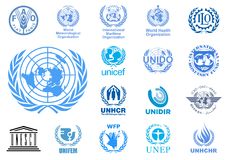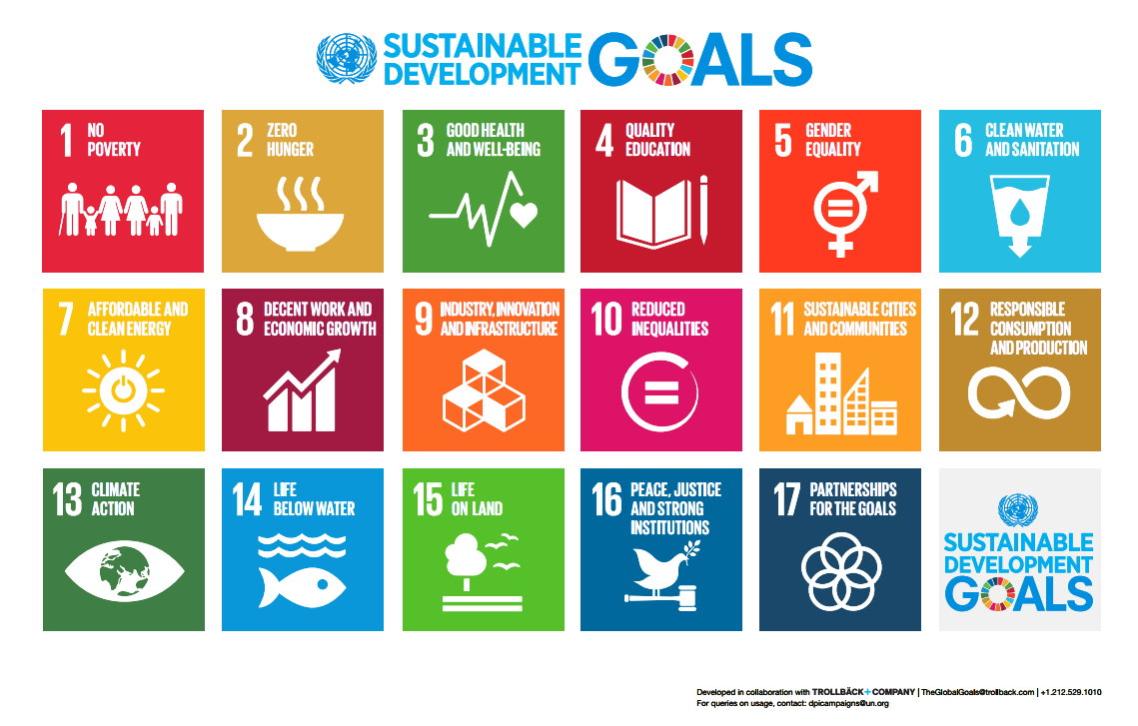UNITED NATIONS AGENDA

FREEMASON TIES
https://inpursuitofhappiness.wordpress.com/2007/07/26/united-nations-occult-masons/
Temple of Understanding at the United Nations. - SHOWS THE FREEMASON SYMBOL
while searching RA25 i found this site for FAO
FOOD AND AGRICULTURE ORGANIZATION OF THE UNITED NATIONS - ASSOCIATED WITH RABOBANK WHO HAVE OR HAD TIES WITH ROTHSCHILDS
old site http://faostat.fao.org/site/291/default.aspx
new site http://faostat3.fao.org/home/E
http://www.fao.org/documents/card/en/c/fea3da3d-d6ed-4a27-8f58-2d83222b29d9/
nothing out of the ordinary for the above but the below is a doc to read
THE SECOND REPORT ON THE STATE OF THE WORLD’s ANIMAL GENETIC RESOURCES - http://www.fao.org/3/a-i4787e.pdf
and here is one that had page talking about GMO fish and introduction to water supply and "global acceptance must be promoted" (pg 250)
Towards Policies for Conservation and Sustainable Use of Aquatic Genetic Resources
page 213 shows organisatios involved
page 215 is the start of a discussion
UNEP - UNITED NATIONS ENVIRONMENTAL PROGRAMME
http://www.unep.org/post2015/Home/tabid/133006/Default.aspx
POST 2015 AGENDA
PUBLICATIONS- http://www.unep.org/post2015/Publications/tabid/133031/Default.aspx
SUSTAINABE DEVELOPMENT GOALS - http://staging.unep.org/post2015/Portals/50240/Documents/post2015/E%20Sustainable%20Development%20Goals.pdf
TRANSFORMING OUR WORLD - http://www.unep.org/post2015/Portals/50240/Transforming%20Our%20World%20final%2011aug2015.pdf
Means of implementation and the Global Partnership 60. We reaffirm our strong commitment to the full implementation of this new Agenda. We recognize that we will not be able to achieve our ambitious Goals and targets without a revitalized and enhanced Global Partnership and comparably ambitious means of implementation. The revitalized Global Partnership will facilitate an intensive global engagement in support of implementation of all the goals and targets, bringing together Governments, civil society, the private sector, the United Nations system and other actors and mobilizing all available resources. 61. The Agenda’s Goals and targets deal with the means required to realise our collective ambitions. The means of implementation targets under each SDG and Goal 17, which are referred to above, are key to realising our Agenda and are of equal importance with the other Goals and targets. We shall accord them equal priority in our implementation efforts and in the global indicator framework for monitoring our progress. 62. This Agenda, including the SDGs, can be met within the framework of a revitalized global partnership for sustainable development, supported by the concrete policies and actions outlined in the Addis Ababa Action Agenda3 , which is an integral part of the 2030 Agenda for sustainable development. The Addis Ababa Action Agenda supports, complements and helps contextualize the 2030 Agenda’s means of implementation targets. These relate to domestic public resources, domestic and international private business and finance, international development cooperation, international trade as an engine for development, debt and debt sustainability, addressing systemic issues and science, technology, innovation and capacity-building, and data, monitoring and follow-up.
70th session of the General Assembly in preparation for the 2016 meeting of the High Level Political Forum on sustainable development (HLPF)
Addis Ababa Action Agenda of the Third International Conference on Financing for Development (Addis Ababa Action Agenda) http://www.un.org/ga/search/view_doc.asp?symbol=A/69/L.82
build on the 2002 Monterrey Consensus and the 2008 Doha Declaration
ALSO TALKS ABOUT THE IMF AND WORLD BANK ETC
Land Rights: An Essential Global Indicator for the Post-2015 SDGs September 1st, 2015
Secure land rights for all are a critical component of a transformational agenda of the Post-2015 Sustainable Development Goals (SDGs) and targets. Leveraging decades of extensive expertise, a broad coalition of global and national organizations, civil society, and experts, including the United Nations Environment Program (UNEP), the Women’s Major Group (WMG), the International Union for Conservation of Nature (IUCN), and the UN Sustainable Development Solutions Network (SDSN), recommends the following Land Rights Indicator. Universal and feasible, this recommended land rights indicator is vital to four of the sustainable development goals, including ending poverty (goal 1), ensuring food security (goal 2), achieving gender equality and empowering women (goal 5), and making cities and human settlements inclusive (goal 11).1 This indicator, best placed under Target 1.4, would capture gender equality and progress of all people’s on-the-ground rights to land, property, and natural resources. This land rights indicator further aligns with priority indicators issued by the Global Land Indicators Initiative, and supported by the Global Donor Working Group on Land.

look into mangrove remote sensing.
I found a link from s site on mangroves to Ball Aerospace.
The PDF i have here is talking about it and says
"These ecosystem goods and services are estimated to be worth about US $10,000 per hectare per year or about US $180 billion globally (Heumann 2011b)"
With programs run by the UN which i think ball is associated with
PDF source http://www.edc.uri.edu/mesm/Docs/MajorPapers/Mensah_2013.pdf

|
Mensah_2013_mangrove remote sensing_UNEP and Ball.pdf Size : 4234.293 Kb Type : pdf |
SAR
http://ppg.sagepub.com/search?fulltext=SAR&sortspec=date&submit=Submit&andorexactfulltext=phrase&src=selected&journal_set=spppg
space-borne synthetic aperture radar (SAR) or VHR satellite/air-borne hyperspectral...respectively)
Potential of remote sensing to predict species invasions: A modelling perspective.
I THINK THIS COULD BE LINKED TO SOMETHING I FOUND ON RA25.
A DOCUMENT FROM THE UNS UNITED FOOD ORGANIZATION ON INTRODUCTION OF GM FISH FOR "SUSTAINABILITY"
UNITED NATIONS ECONOMIC COMMISSION FOR AFRICA
Small Island Developing States (SIDS)
They are shifting to cleaner, smarter and sustainable technologies and solutions. In other words, they are the pioneers of the ‘Blue Economy’, a concept that is turning climate challenges into opportunities.
we need to redouble efforts to help African and the rest of the world’s 52 SIDS sustain their fight to combat climate chang
http://www.uneca.org/es-blog/paradox-africa%E2%80%99s-small-island-developing-nations
https://sustainabledevelopment.un.org/content/documents/2978BEconcept.pdf
7). Charting a course to the Blue Horizon To realise the necessary international cooperation and support to elevate the Blue Economy to the international sustainable development agenda37, diplomatic effort amongst SIDS has targeted the preparatory process leading up to the Third International Conference on Small Island Developing States in Apia, Samoa 2014. The Government of Seychelles, with its partners, has taken on the challenge of placing the Blue Economy on the international agenda, presenting it and finding strong support at the 21st African Union Summit (19-27 May 2013), the Tokyo International Conference on African Development (TICAD V) 1-3 June 2013, the 1st Indian Ocean Rim Association for Regional Cooperation (IOR-ARC) Economic and Business Conference (4-5 July, 2013) and the AIMS meeting in Seychelles (17-19 July, 2013). It is proposed to hold a “Blue Summit” in Abu Dhabi in January 2014, as part of the Sustainable Development Week with the support of the Government of the United Arab Emirates. This will allow SIDS groupings and other partners (e.g. IOR-ARC etc…) to contribute to an internationally endorsed Blue Economy document for submission to the Third International Conference on Small Island Developing States in Samoa, 2014. Full development and endorsement of the proposal in Samoa would constitute the next step in securing international momentum for, and acceptance of, the Blue Economy as an approach distinct from, but mutually supportive with, the Green Economy model.
8).Preliminary Listing of Potential Partner Agencies and Processes AIMS, AOSIS, CARICOM, Convention on Biological Diversity, Commission on the Limits of the Continental Shelf, Convention on Migratory Species, Indian Ocean Commission, Commonwealth Secretariat, Duke University USA, GLISPA, Global Ocean Acidification Observing Network, Global Ocean Commission (GOC), Global Ocean Forum, the IOC/UNESCO Global Ocean Observing System (GOOS), World Bank (IBRD), International Maritime Organisation, International Seabed Authority, IOR-ARC, National Oceanic and Atmospheric Administration USA, Ocean Acidification International Coordination Centre, Ocean Acidification International Reference User Group, Plymouth Marine Laboratory UK, Regional Seas Programmes, RFMOs, SPREP, UNDESA, UNDOALOS (UNCLOS), UNDP, UNEP, UNESCO’s Intergovernmental Oceanographic Commission, UNFAO, UNIDO, UNWTO, World Ocean Council. CBD Sustainable Oceans Initiative, UNEP Green Economy Initiative, European Project on Ocean Acidification.
9). References FAO (2010). The State of World Fisheries and Aquaculture. Rome: FAO. FAO (2012). The State of World Fisheries and Aquaculture. Rome: FAO. FAO/IBRD (2009). The Sunken Billions – The economic justification for fisheries reform ISBN: 978-0- 8213-7790-1. GOC (2008). Policy Brief on Fisheries and Aquaculture. Global Oceans Conference. GPO (2013). Global Ocean Partnership. http://www.globalpartnershipforoceans.org/ Hunt & Vincent (2006). Scale and sustainability of marine bioprospecting for pharmaceuticals,” AMBIO, vol. 35, no. 2, pp. 57–64, 2006. IEA (2010). World Energy Outlook 2010. IEA (2012). World Energy Outlook 2012. IFFO (2013). Linkage between farmed fish and wild fish - fishmeal & fish oil as feed ingredients in the context of sustainable aquaculture. Jonathan Shepherd, Director General, International Fishmeal & Fish Oil Organisation, OECD Conference Paris 15th – 16th April 2010. IGBP, IOC, SCOR (2013). Ocean Acidification Summary for Policymakers – Third Symposium on the Ocean in a High-CO2 World. International Geosphere-Biosphere Programme, Stockholm, Sweden. IOC/UNESCO, IMO, FAO, UNDP. (2011). A Blueprint for Ocean Sustainability, Paris. Leary et al (2009). Marine genetic resources: A review of scientific and commercial interest. Mar Policy 33:183–194 Nellemann, C. et al (2009). Blue Carbon. A Rapid Response Assessment. UNEP, GRID-Arendal, ISBN: 978-82-7701-060-1 OECD (2012). The Future of the Ocean Economy – exploring the prospects for emerging ocean industries to 2030. PARM (2004). Assessment of the sustainability of industrial fisheries producing fishmeal and fish oil. Poseidon Aquatic Resource Management Ltd and the University of Newcastle-Upon-Tyne. Noone et al (eds) (2012). Valuing the Ocean. Extended Executive Summary. Stockholm Environment Institute. Sherman, K & Adams, S. (eds)(2010). Sustainable Development of the World’s Large Marine Ecosystems during Climate Change. IUCN UNCTAD (2012). Review of Maritime transport 2012. ISBN 978-92-1-112860-4 UNDP-GEF (2012). Catalysing Ocean Finance. Volume I Transforming Markets to Restore and Protect the Global Ocean. UNEP (2013). Green Economy Definition. http://www.unep.org/greeneconomy/AboutGEI/ UNEP, FAO, IMO, UNDP, IUCN, GRID-Arendal (2012). Green Economy in a Blue World. ISBN: 978-82- 7701-097-7. UNWTO (2013). World Tourism Barometer. Vol 11, April 2013. UNWTO (2013a). Tourism highlights 2013 edition. Wilkinson, C. (2008). Status of Coastal reefs of the world 2008. GCMRN.

|
Blue economy 2978BEconcept.pdf Size : 524.453 Kb Type : pdf |
http://www.theblueeconomy.org/
http://www.zeri.org/ZERI/The_Blue_Economy.html
THE BLUE ECONOMY "A REPORT TO THE CLUB OF ROME"
http://www.theblueeconomy.org/
On the below doc page 27 was already highlighted yellow and mentions the mangroves
http://www.unep.org/NairobiConvention/docs/Updated_Draft_MFF_Situation_Analysis_STATE.pdf

|
Updated_Draft_MFF_Situation_Analysis_STATE.pdf Size : 406.374 Kb Type : pdf |